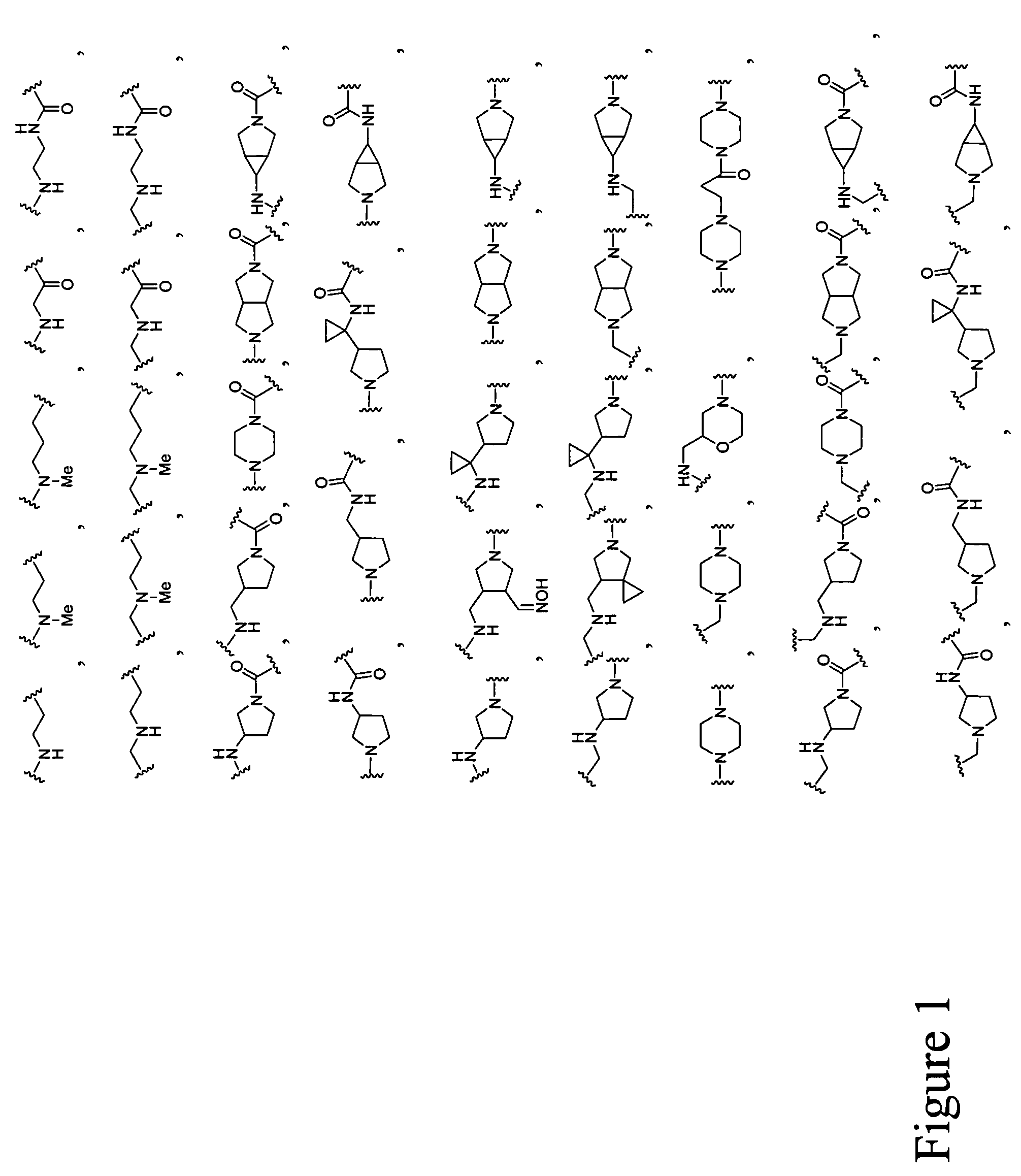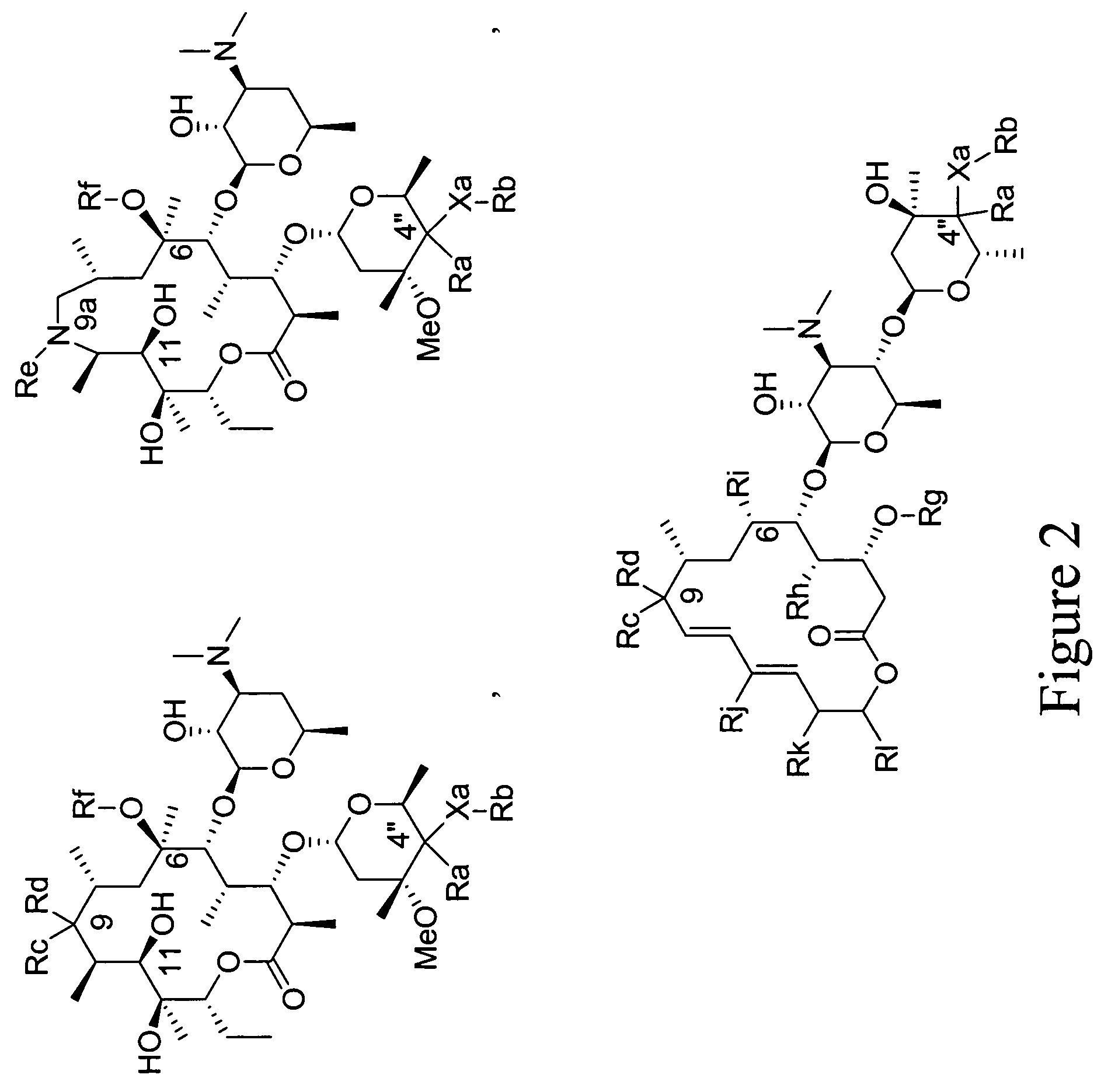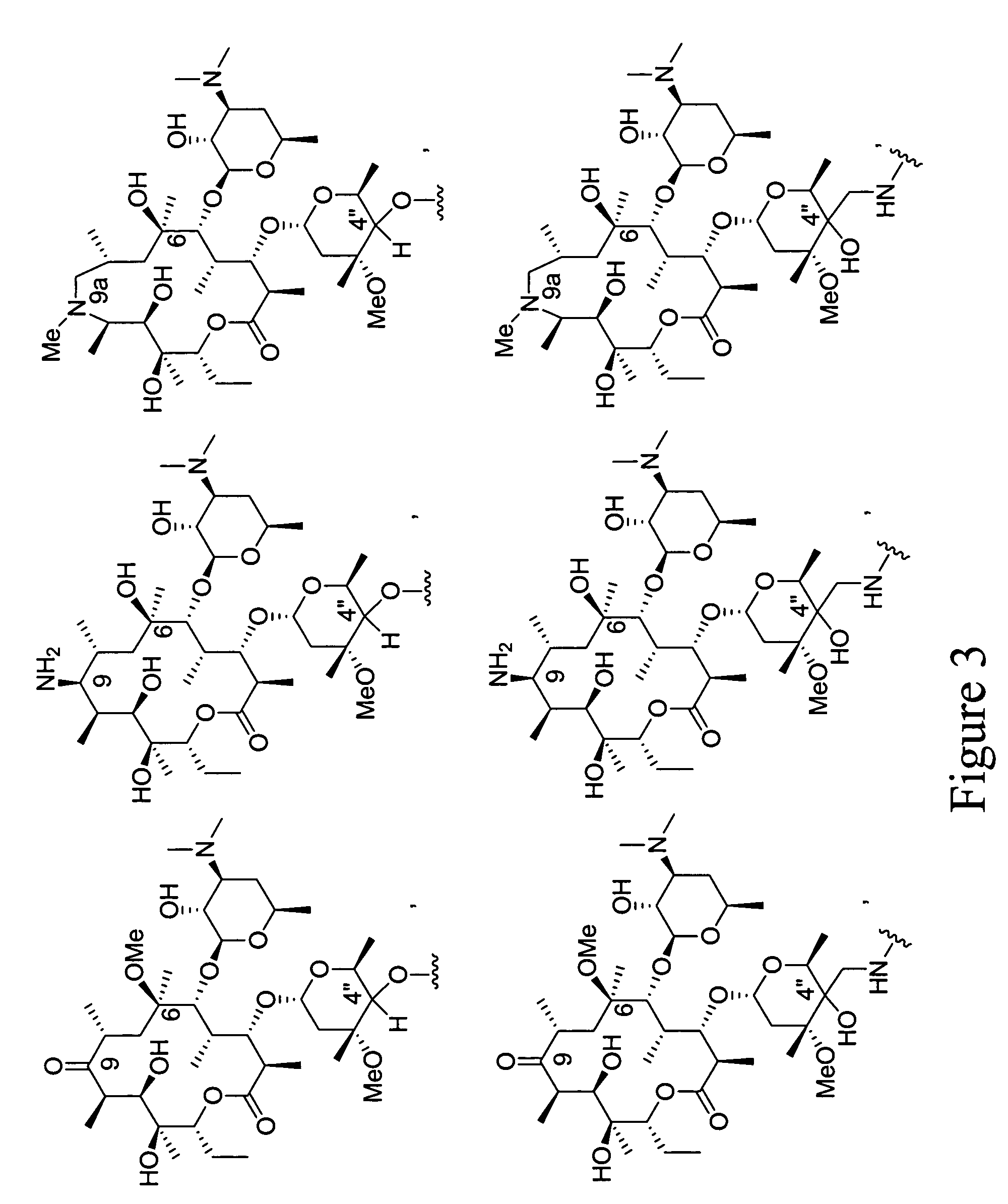Rifamycin derivatives effective against drug-resistant microbes
a technology of rifamycin and derivatives, which is applied in the field of rifamycin compounds, can solve the problems of unable to demonstrate by specific examples, limited therapeutic applications of naturally occurring rifamycins, and rapid development of microbial resistan
- Summary
- Abstract
- Description
- Claims
- Application Information
AI Technical Summary
Benefits of technology
Problems solved by technology
Method used
Image
Examples
example 1
or its quinone form Formula II
R1 group in Formula I can be a hydrogen atom and the molecule is in the same oxidation state as that of rifamycin SV. R1 can also be a lower alkyl or substituted lower alkyl group of between 1 to 6 carbon atoms. The C-4 position of rifamycins can tolerate a substituent group, these compounds may have activity against microorganisms. In addition, R1 can be a —CH2COOH, or a —CH2C(O)NR11R12 group. Compounds with these substituents can be conveniently derived from rifamycin B, although they can be prepared from other rifamycin compounds as well. The structure of the amide group —C(O)NR11R12 herein can be varied from a simple amide, wherein R11 and R12 are both hydrogen atoms to more complex structure, wherein either one or both R11 and R12 independently are lower alkyl groups between 1 to 6 carbon atoms, where the alkyl groups can be substituted by a variety of substituent groups. Examples of the substituent groups include alkyl, substituted alkyl, amino, a...
example 2
Administration to a Subject:
The pharmaceutical composition of the present invention comprises a therapeutically effective amount of a compound of the current invention formulated together with one or more pharmaceutically acceptable carriers. Injectable preparations can be formulated according to the known art using suitable dispersing or wetting agents and suspending agents. The sterile injectable preparation can also be a sterile injectable solution, suspension or emulsion in a nontoxic parenterally acceptable diluent or solvent, for example, as a solution in 1,3-butanediol. Among the acceptable vehicles and solvents that can be employed are water, Ringer's solution, U.S.P. and isotonic sodium chloride solution. In addition, sterile, fixed oils are conventionally employed as a solvent or suspending medium. The injectable formulations can be sterilized, for example, by filtration through a bacterial-retaining filter, or by incorporating sterilizing agents in the form of sterile sol...
example 3
Synthetic Methods:
The compounds of the current invention can be better understood in connection with the following general synthetic schemes. The synthetic procedures shown below in Schemes 1 to 10 are for illustration purposes and are not intended for limiting the scope of the invention. It will be apparent to one skilled in the art that the compounds of the current invention can be prepared by a variety of synthetic routes, including but not limited to substitution of appropriate reagents, solvents or catalysts, change of reaction sequence, and variation of protecting groups. The groups R1, R2, R3, X, X1, X2, and A in Scheme 1 to 10 (FIGS. 7-14) are as defined above.
Scheme 1 in FIG. 7 illustrates that compounds RIFIa and RIFIIa of Formula I and II of this invention can be prepared by reacting rifamycin B or a 3-halorifamycin (RIF1), wherein Rs represents hydrogen, chloro, bromo or iodo group, with a molecule of structure A-X—H, which contains a nucleophilic group in the molecule. ...
PUM
| Property | Measurement | Unit |
|---|---|---|
| Structure | aaaaa | aaaaa |
| Electrical resistance | aaaaa | aaaaa |
Abstract
Description
Claims
Application Information
 Login to View More
Login to View More - R&D
- Intellectual Property
- Life Sciences
- Materials
- Tech Scout
- Unparalleled Data Quality
- Higher Quality Content
- 60% Fewer Hallucinations
Browse by: Latest US Patents, China's latest patents, Technical Efficacy Thesaurus, Application Domain, Technology Topic, Popular Technical Reports.
© 2025 PatSnap. All rights reserved.Legal|Privacy policy|Modern Slavery Act Transparency Statement|Sitemap|About US| Contact US: help@patsnap.com



